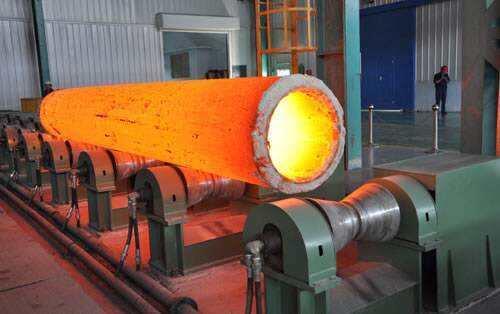
Steel Normalizing vs. Annealing - Permanent Steel Manufacturing Co.,Ltd
Normalizing, also known as normalization, is a metal heat treatment process in which the workpiece is heated to 30~50°C above Ac3 or Accm, and after holding it for a period of time, it is removed from the furnace in the air or cooled by spraying water, spraying or blowing. Its purpose is to make the grain refinement and carbide distribution uniform.

Annealing: A metal heat treatment process in which steel is slowly heated to a certain temperature, kept for sufficient time, and then cooled at an appropriate speed (usually slow cooling, sometimes controlled cooling). The purpose is to soften materials or workpieces processed by casting, forging, rolling, welding or cutting, improve plasticity and toughness, homogenize chemical composition, remove residual stress, or obtain expected physical properties. There are many annealing processes depending on the purpose, such as recrystallization annealing, isothermal annealing, homogenization annealing, spheroidizing annealing, stress relief annealing, recrystallization annealing, stabilization annealing, magnetic field annealing, etc.
The main difference between annealing and normalizing:
1. The cooling rate of normalizing is slightly faster than annealing, and the degree of undercooling is greater.
2. The structure obtained after normalizing is finer, and the strength and hardness are higher than that of annealing.
The choice of annealing and normalizing:
1. For low carbon steel with carbon content <0.25%, normalizing is usually used instead of annealing. Because the faster cooling rate can prevent low-carbon steel from precipitating free tertiary cementite along the grain boundary, thereby improving the cold deformation performance of stamping parts; normalizing can improve the hardness of steel and the cutting performance of low-carbon steel; In the heat treatment process, normalizing can be used to refine the grains and improve the strength of low carbon steel.
2. Medium-carbon steel with carbon content between 0.25 and 0.5% can also be normalized instead of annealing. Although the hardness of medium-carbon steel with carbon content close to the upper limit is higher after normalizing, it can still be cut and the cost of normalizing Low and high productivity.
3. Steel with carbon content between 0.5 and 0.75%, due to its high carbon content, the hardness after normalizing is significantly higher than that of annealing, and it is difficult to perform cutting. Therefore, full annealing is generally used to reduce the hardness and improve cutting. Processability.
4. High-carbon steel or tool steel with carbon content> 0.75% generally adopts spheroidizing annealing as a preliminary heat treatment. If there is a network of secondary cementite, it should be normalized first. Annealing is a heat treatment process in which the workpiece is heated to an appropriate temperature, kept for a certain period of time, and then slowly cooled. Slow cooling is the main feature of annealing. Annealed parts are generally cooled to below 550°C in the furnace and air-cooled out of the furnace. Annealing is a very widely used heat treatment. In the manufacturing process of molds or machine parts, it is often arranged as a preliminary heat treatment after forging and welding and before cutting (rough) processing. It is used to eliminate some defects caused by the previous process and prepare for the subsequent process.
Go here to learn “5 Heat Treatment Processes for Seamless Steel Pipes”


